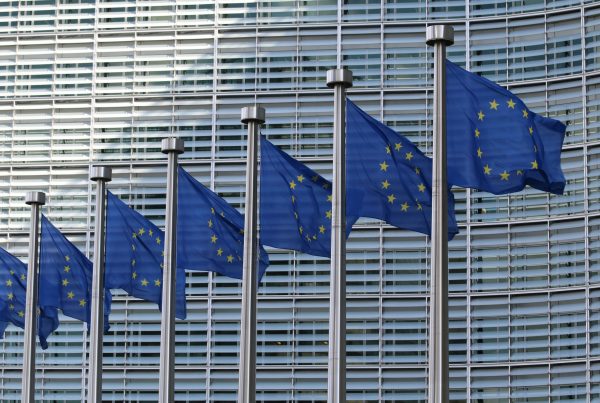As the climate crisis intensifies, companies use carbon offsetting to reduce their impact. However, offsetting is not enough and should only supplement other efforts, as the carbon market is filled with low-quality credits. To ensure real results, companies should focus on abating emissions first and prioritise Carbon Dioxide Removal (CDR) projects. In this article, we will discuss the current voluntary carbon market, the importance of CDR, and ADC’s carbon removal strategy.
Why is it time to consider a carbon removal strategy?
The global climate crisis cannot be addressed with voluntary carbon offsetting alone. Carbon offsetting should also never be a companies’ only strategy. In the mitigating hierarchy, it should always come after abating emissions. Just mentioning carbon offsetting will raise suspicion, and rightfully so, with new articles coming out every year on worthless or even harmful carbon credits. [Guardian]
Regardless of its flaws, however, the voluntary carbon market is playing a crucial role in tackling the climate crisis. To even come close to reaching the Paris Agreement, it is essential to keep investing both in future carbon avoidance and carbon capturing. Given this importance, we believe it should become part of a company’s requirements to ensure real results before making any neutrality claims. Responsible companies need to stop wasting good money on bad offsets.
The state of the current voluntary carbon market
There has been a surge in interest in carbon offsets over the last five to ten years and this interest is only expected to grow more, while corporations have started to align themselves with net-zero targets. However, the general growth in carbon credits being sold, is meaningless when these investments are made using low-quality credits.
Although there is a need to globally invest in all kinds of projects that ensure future carbon avoidance, such as renewable energy sources or cookstoves, the claims that these projects can count as carbon offsetting can often not be substantiated. Furthermore, popular carbon credits are often sold for very low prices, while concepts of additionality, double counting, and performance are not considered or properly validated.
While offsetting prices remain low because of these dubious credits, this will have a double negative effect. The low cost of offsetting will create less incentive for companies to change their behaviour and focus on carbon abating. At the same time, the credits that are bought are likely to have less impact than was promised or can even be harmful for the climate.
Moving towards Carbon Dioxide Removal (CDR)
Following the Oxford principles [Oxford] on carbon offsetting, it is necessary to move from offsets that only avoid future emissions toward actions that remove carbon from the atmosphere, and to move from short-term to long-term storage. Carbon Dioxide Removal (CDR) projects physically remove the CO2 that is currently in the atmosphere and store it, for example, by growing a tree.
However, the area of land on which we can grow trees is limited. Furthermore, cheap forestation credits do not always account for the full carbon life cycle or for the biodiversity issues of planting many of the same evasive species in those habitable areas. In other words, it is necessary to invest in a wider range of CDR projects and their effects should be evaluated thoroughly. These projects will often require a larger investment but will have the desired impact.
ADC’s carbon removal strategy: Partnership
Our priority was to partner with a company that has made it their mission to evaluate carbon removal projects to ensure that they are of high-quality. Among other things, we found it important that our partner evaluated CDR projects on three topics.
- Additionality: meaning that the project would not have happened without the financial backing of the investor and goes beyond the climate objectives of the host country.
- Performance: monitoring both the effectiveness and reliability of the climate impact.
- No double counting: referring to a situation where two parties will claim the same carbon removal or avoidance. For example, the investor in a renewable energy source and the users of that renewable energy source both counting the avoided emissions as their own.
ADC’s carbon removal strategy: Investments
Apart from these essentials, we have also chosen our own climate strategy. With the help of the projects evaluated by our new partner, Klimate.co, we are now investing in four areas.
- Ex-post CDR projects because to claim real Net Zero emissions, a removal project should have happened in line with the released emissions.
- Mostly natural carbon sinks over removal technologies because nature-based solutions often result in co-benefits to the ecosystem, biodiversity, social, or adaptation.
- A diverse set of CDR techniques to stimulate the market because investing in carbon removal today is not only about taking responsibility for emissions but also about helping to build the sector.
- Net-positivity because we are investing to remove 25% more carbon than our estimated operational emissions. In this way, we have a buffer for the underestimations in our current calculations, mitigate some climate integrity risks, and set an example of net-positivity. In our strategy, we have stated that this additional removal can be ex-ante CDR projects.
For 2022 this has meant that we are removing 100 tonnes of CO2 with a healthy mix of CDR projects. To read how we established a partnership, built this strategy, and carbon removal impacts our broader climate policy, please read this interview about setting up an internal climate policy.
Our advice for setting up your own carbon removal strategy
In our global fight against the climate crisis, we cannot stress enough that we need investments in all kinds of initiatives, and we need them to happen now. In this article, we are advocating for these investments to have a clear rational behind them. We should be aware of the pitfalls, ensure that we are not investing in harmful credits, and make well-informed decisions when entering the voluntary carbon market. Choose quality over quantity. Match our carbon strategy to what we would like to achieve. Evaluate, iterate, and improve.
For more information on the pros and cons of certain CDR projects, we would recommend going to the website of Klimate.co. For more information on what to consider in revolutionising the voluntary carbon market, we would like to refer you to the white papers that Compensate writes on this topic.
Ready for your path to becoming net-positive?
Setting up a well-rounded climate strategy will likely involve combining different data sources and possibly setting up a new data architecture. Accurate emission calculations, for example, are mostly driven by data availability and governance. Once a calculation process is in place, it is helpful to determine a baseline and set up relevant KPIs for future monitoring. This can be a challenge, but one that our team of consultants can support.
Let's shape the future
Curious to hear how ADC can support your Net Zero ambitions? Do you want to discover how we can help your organisation set up a sustainable data-driven strategy? Get in touch with Julia van Huizen (Agriculture & Food Lead) or Fleur Fok (Senior Consultant, Climate Impact) or visit our contact page.

What stage is your organisation in on its data-driven journey?
Discover your data maturity stage. Take our Data Maturity Assessment to find out and gain valuable insights into your organisation’s data practices.







